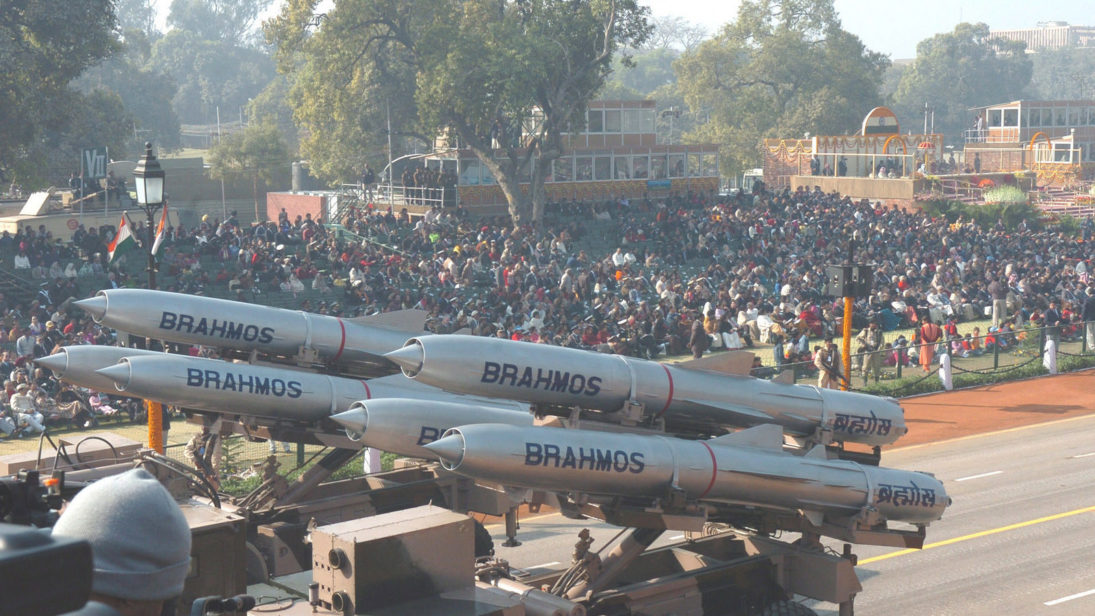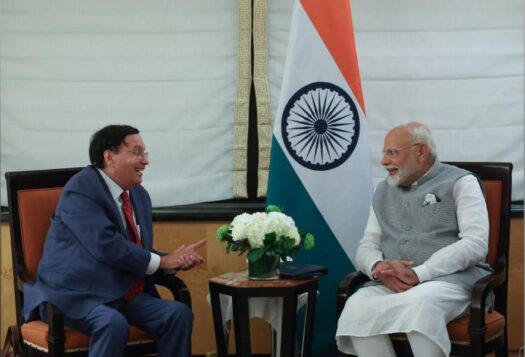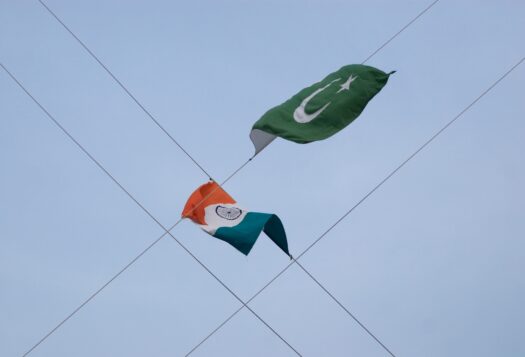
Christopher Clary and Vipin Narang’s article “India’s Counterforce Temptations: Strategic Dilemmas, Doctrines and Capabilities” in International Security attempts to make sense of India’s apparent approach toward nuclear counterforce capability. They present evidence—including the statements and writings of former national security officials and a catalogue of shifting nuclear capabilities—to suggest that India is deviating from its traditional countervalue targeting orientation. These shifts diverge from the basic tenets of India’s stated nuclear doctrine promulgating nuclear no first use (NFU), massive retaliation, and credible minimum nuclear deterrence. The authors explain the underlying reasons for India’s shift towards nuclear counterforce, evaluate India’s present counterforce targeting ability, and discuss the implications of such a departure for overall strategic stability between India and Pakistan. However, Clary and Narang’s argument falls short of establishing that India’s shift toward counterforce is deliberate and directed by a change in strategic thinking rather than a case of strategy following technology.
Drivers and Consequences of Counterforce
The article argues thatPakistan’s strategy of using terrorist proxies against India and using thethreat of battlefield nuclear weapons to deter a riposte by India’s superiorconventional military forces has caught India in a state of strategicparalysis. The authors posit that by acquiring the capability to neutralizePakistan’s longer-ranged strategic nuclear weapons, India would establishescalation dominance at the highest end of violence, deterring Pakistan’s useof tactical nuclear weapons in a conventional conflict with India. This wouldin turn allow India to use the threat of its superior conventional forces todeter Pakistan from using its subconventional forces (militant proxies) againstit.
Clary and Narang argue thatPakistan’s relatively small longer-ranged nuclear arsenal might tempt Indianplanners to harbor confidence (and perhaps overconfidence) in its ability to neutralizethem. The authors categorically state that this shift towards counterforce targetingor damage limitation is directed towards Pakistan and not China, as the latterhas a much larger and more dispersed nuclear arsenal. The authors state thateven a perceived shift in India’s nuclear strategy towards counterforcetargeting would plunge both India and Pakistan into competitive arms racing anderode deterrence stability by creating a first mover advantage for both sides.
Reputation over Strategic Logic
Clary and Narang stronglyargue that the strategic shift has been guided by a change in India’s strategicthinking and is not the result of technological drift by the privateinitiatives of India’s scientific community. This, they argue, is because Indiastill has a poor economy where defense budgets are under strict scrutiny, rendering it unlikely that Indianofficials would approve of “expensivecounterforce-enabling systems without some strategic purpose.”
While the argument is intuitive, it contradicts historical evidence. Citing a series of examples related to India’s efforts to develop indigenous weapon systems, Stephen Cohen and Sunil Dasgupta argue that “the [Indian] scientific establishment places greater value on the development of indigenous technological capacity even if it does not produce the weapons the military wants.” In a similar vein, analyst Gaurav Kampani has argued that in the 1960s, India’s Defense Research and Development Organization (DRDO) and its principal missile laboratory, the Defense Research and Development Laboratory (DRDL), secured political sanction to develop a surface-to-air (SAM) missile system, based on the Soviet liquid-fueled SA-2 missile without solicitation of any formal advice or user requirement from the armed forces. Kampani also flags the case of Project Valiant, an ambitious plan by the Indian leadership to develop an 8,000 km ranged intercontinental ballistic missile (ICBM) in 1971. Since the Indian political leadership did not solicit the advice of the armed forces while planning for the project, their goal appears to have been to demonstrate India’s competence in developing advanced technologies rather than a response to pressing security needs.
Moreover, India’s musings about building a nuclear submarine, which date back to the late 1960s and received greater impetus after the United States engaged in gunboat diplomacy during the 1971 India-Pakistan war. It is interesting to note that India chose to opt for a hitherto unknown technology to deter threats to its sovereignty rather than go for readily available and cheaper alternatives like conventional submarines or anti-ship missiles. These examples suggest that India has a history of investing in complex and expensive defense technologies to demonstrate its technical prowess even if they lacked clear strategic logic.

Keeping Pace with Technology
The authors have identified several of India’s nuclear capability developments, including improvements to ballistic missile survivability and accuracy, improvements in intelligence, surveillance, and reconnaissance (ISR) platforms, and ballistic missile defense (BMD), as technologies that hint toward India’s shift towards a counterforce strategy. India’s ballistic missiles are evolving as they transition from vulnerable liquid-fueled to more survivable cannisterized solid-fueled missiles with terminal guidance for increased accuracy. This evolution of ballistic missiles is a global trend, as others, such as China, are increasingly producing highly accurate long- and intermediate-range nuclear-capable ballistic missiles. By the standards of Clary and Narang, a country would have to deliberately strangle technological advancements and modernization of its missile arsenal in order to demonstrate a countervalue targeting strategy or even an NFU pledge. There is no evidence to support the view that any country has held back from employing technologies that increase the accuracy of their missiles.
By the standards of Clary and Narang, a country would have to deliberately strangle technological advancements and modernization of its missile arsenal in order to demonstrate a countervalue targeting strategy or even an NFU pledge.
India’s forays into BMD are perhaps a strong technological marker for building a case for India’s strategic shift towards a damage limitation approach against Pakistan. As they are designed to intercept an inbound nuclear strike, BMDs are purely for damage limitation. However, according to several accounts, India’s BMD program is at a nascent stage and is at least decades from being deployed effectively. Even Pakistani officials are suspect of the effectiveness of India’s BMD and remain confident that a Pakistani nuclear strike would still get through. Given global concerns regarding the safety of Pakistani nuclear arsenal due to deteriorating security conditions within the country’s borders, one could build the case that the Indian BMD program is motivated by the relative vulnerability of the Pakistani nuclear arsenal to theft or unauthorized launch. The current state of development of the Indian BMD system is not capable of handling multiple salvos of missiles (as in case of a nuclear counter-strike) but perhaps could intercept one or two incoming missiles, which would more likely be a scenario of unauthorized launch.
Blurred Lines between Countervalue and Counterforce
The strict categorization between counterforce and countervalue weapons is also somewhat misleading as their perceived roles change overtime with technological progress. Take for example the ballistic missile submarine, which early on was considered accurate enough only to target population centers, but with advancements in inertial navigation, mid-course flight correction, terminal guidance, burst-height compensating super-fuse, etc., the once inaccurate submarine launched ballistic missiles (SLBMs) turned into a first-strike weapons with counterforce capability.
Alternately, with advancements in anti-submarine warfare (ASW) technologies, the once stealthy ballistic missile submarine, which was considered to be a secure second strike platform, has been rendered vulnerable. It is likely that as ASW technologies like underwater drones mature, the sea-leg of the triad might further weaken, shifting the onus of deterrence back to land-based and air-delivered nuclear weapons. Developments in these ballistic missile submarine technologies, as with other nuclear capability developments cited by Clary and Narang, clearly fall into a malleable grey area not clearly defined by countervalue or counterforce alone.
Conclusion
In the age of technological nuclear counterforce, arms limitation treaties between India and Pakistan will need to gain salience.
Despite identifying important technological shifts occurring within India’s strategic landscape, Clary and Narang have fallen short of making the case that these shifts have come with a clear, counterforce-oriented strategic purpose. With growing missile accuracy and improvements in ISR capabilities, the effectiveness of traditional methods of deterrent survivability like concealment and hardening are being eroded. Under such conditions, states are likely to shift toward hair-trigger nuclear alert systems and increase the numbers within their nuclear arsenal.
The way out of this quagmire is not to impose technology restrictions, as they are difficult to enforce and verify, by rather to enforce limitations on warhead production since a counterforce strategy requires far more nuclear warheads than a strictly retaliatory, second-strike strategy. A counterforce strategy not only must direct several warheads over a number of adversary targets, but also account for decoy targets and still retain a residual retaliatory and deterrent capability.
Despite continuing technological advancements, an arms control agreement that imposes restrictions on the number of warheads and launchers would generate greater confidence in overall deterrence stability in South Asia. In the age of technological nuclear counterforce, arms limitation treaties between India and Pakistan will need to gain salience.
Editor’s Note: In an ongoing series aimed at bridging the divide between policy analysis and academic scholarship, SAV contributors review recent articles and books published by leading scholars to evaluate the latest theoretical and analytical debates on strategic issues and their implications for South Asia. Read the series here.
***
Click here to read this article in Urdu.
Image 1: Public.Resource.Org via Flickr
Image 2: Pallava Bagla via Getty


